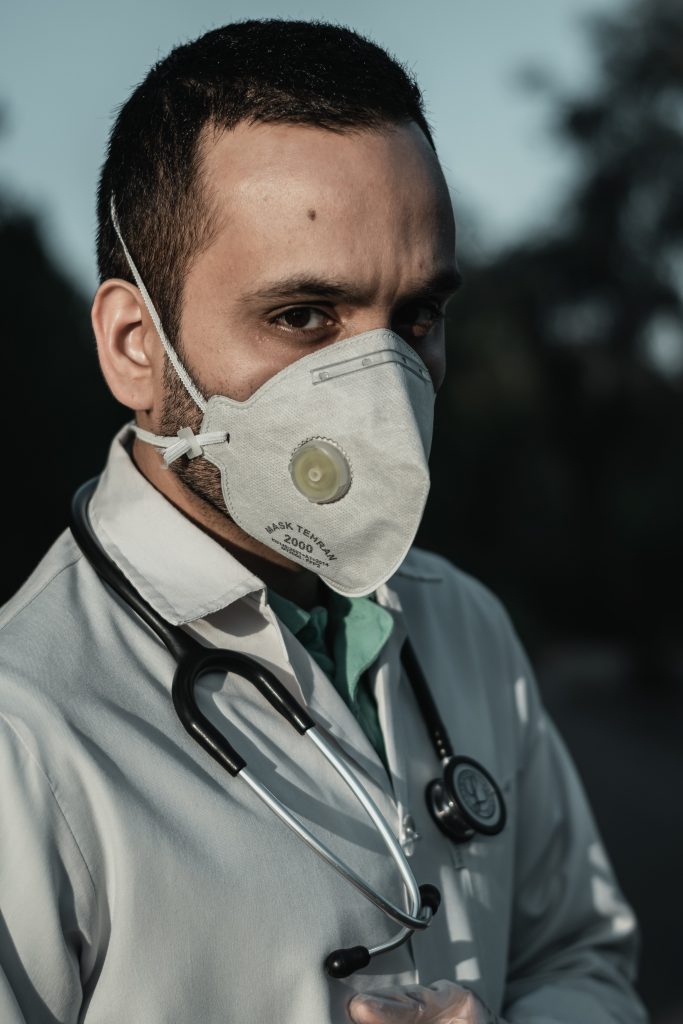As the country reopens and stay-at-home orders are eased, the risk to seniors from COVID-19 may increase. While the curve has flattened in some parts of the country, infected people still inhabit every state. Since a large percentage of individuals who carry the coronavirus have no symptoms — and may never develop symptoms — it is difficult to know how widespread the virus may be in any community. We do know, however, that infected but pre-symptomatic or asymptomatic individuals can unknowingly spread the disease.
As seniors begin to leave home to do errands, socialize, or just to get some fresh air, they may be exposed to the virus. Perhaps more frightening to families is the risk that younger people who have returned to work will carry the virus with them when they visit aging parents and grandparents.
COVID-19 Risk Factors
Experts are still debating the percentage of the population that becomes seriously ill after an infection, but there is no doubt that coronavirus infections are more dangerous to the elderly than to people who are young and healthy. Eight in ten deaths caused by COVID-19 involve people over the age of 65. The CDC classifies individuals who are 65 or older as “high risk.”
The risk of serious illness or death increases when elderly individuals have a health condition that makes them susceptible to serious COVID-19 symptoms. Those conditions include:
- Asthma and lung disease
- Diabetes
- Cancer
- Serious heart conditions
- Kidney disease that requires dialysis
- Liver disease
- Any condition that compromises the autoimmune system
Smoking and obesity are also associated with an elevated risk.
Senior Living Facilities
Exposure to groups of people significantly enhances the risk of spreading an infection. For that reason, some nursing homes, assisted living facilities, and senior care facilities have experienced local outbreaks of COVID-19.
The CDC has advised senior living facilities to take precautions that include:
- restricting visitors,
- regularly monitoring residents for symptoms, and
- limiting social activities until coronavirus no longer poses a threat.
Family members are encouraged to discuss a resident’s individual needs and how those needs can be attended to safely in light of the pandemic.
Strategies for Minimizing Risks to Seniors
The familiar safety strategies that everyone should follow are even more important to vulnerable seniors. They include social distancing, frequent hand washing, wearing a mask in public, and staying at home whenever possible.
Seniors and people who care for them should watch for symptoms of COVID-19, including a persistent cough, fever, and shortness of breath. Other flu-like symptoms might or might not accompany a coronavirus infection. Whenever any symptoms manifest, it is wise to ask the senior’s treating physician whether a COVID-19 test should be administered.
Seniors need to find a balance between contact with family members and the stress produced by isolation. Seniors may become depressed and suffer from anxiety if their normal routines are disrupted, including social gatherings and contact with family members. Many seniors already suffer from loneliness. Staying at home to avoid infection may exacerbate stress and trigger episodes of severe depression.
Family members should find ways of staying in touch with older relatives without exposing them to physical contact that might transmit the virus. Maintaining regular contact over the telephone is one way to alleviate loneliness. If an older relative has a smartphone or computer, arranging virtual family gatherings through a meeting app will help seniors understand that they have not been forgotten in these difficult times.
Develop a Care Plan
The CDC recommends creating or updating a care plan to assure that seniors receive care for physical and mental health conditions. The plan should list medications the senior requires, the health conditions that need treatment, the healthcare providers who treat those conditions, and the senior’s emergency contacts. A copy should be provided to all caregivers.
Care plans typically include advance directives and other end-of-life planning. They should be developed in sensitive consultation with the senior and with the senior’s primary care physician.
The CDC has also endorsed a COVID-19 Response Toolkit that can help guide discussions between seniors and healthcare providers. The toolkit covers:
- Preparing to cope with the possibility of a serious illness
- The senior’s priorities for inpatient care
- How seniors can protect themselves as they receive outpatient care
- Virtual communication with healthcare providers
While the toolkit is geared toward doctors who advise patients, family members will be better prepared to help elderly relatives if they review relevant components of the toolkit before helping their family members engage with their healthcare providers.
Photo by Ashkan Forouzani on Unsplash
